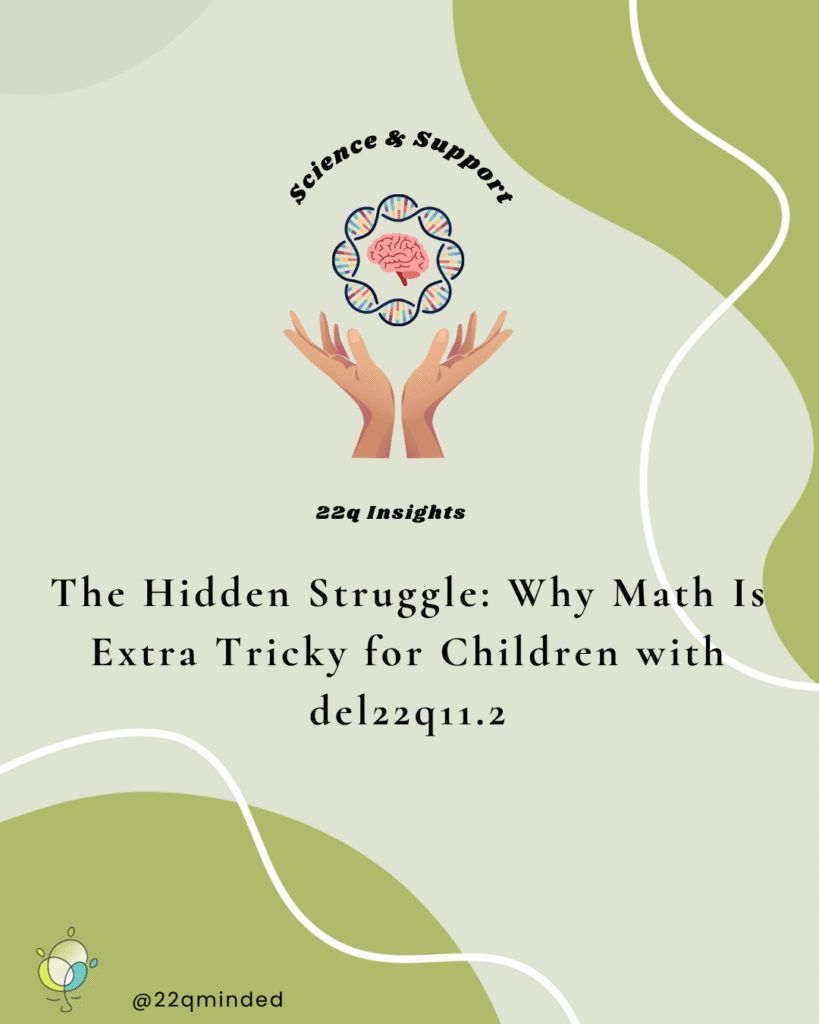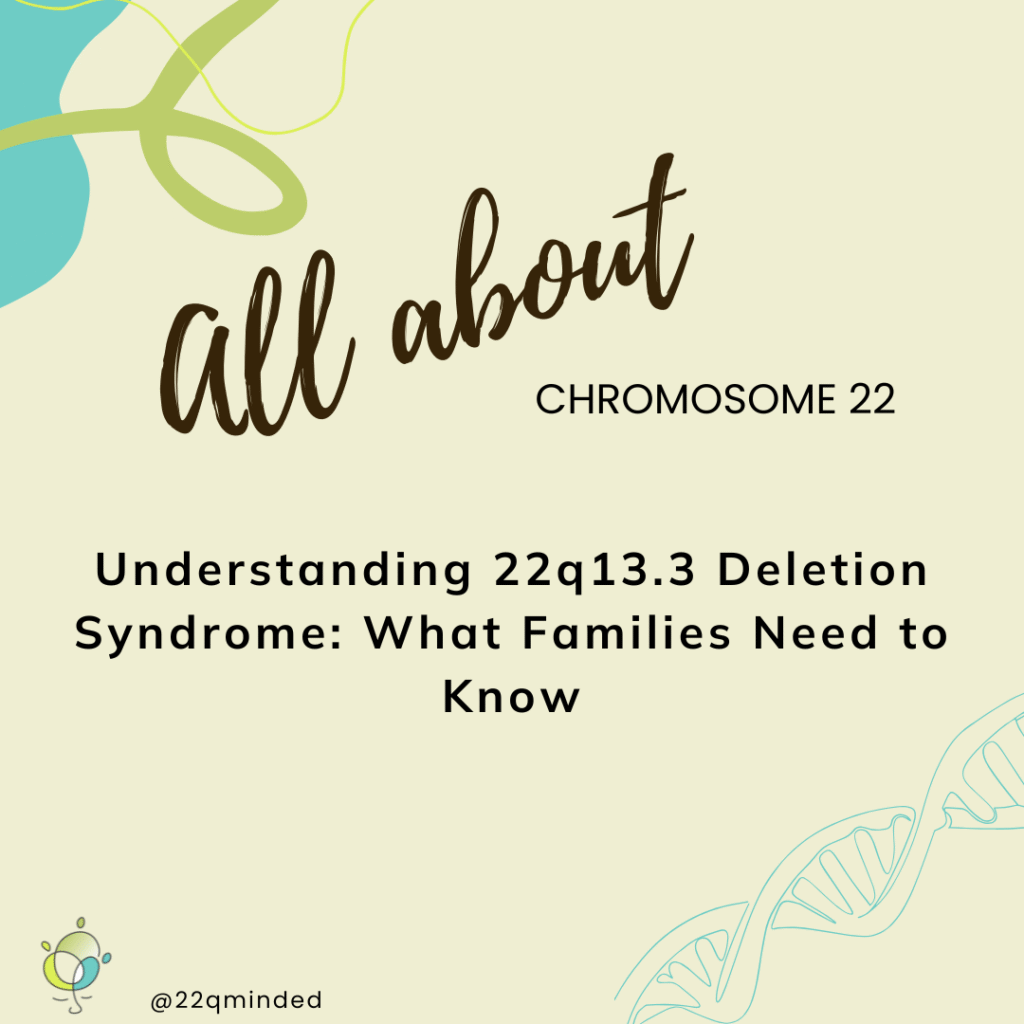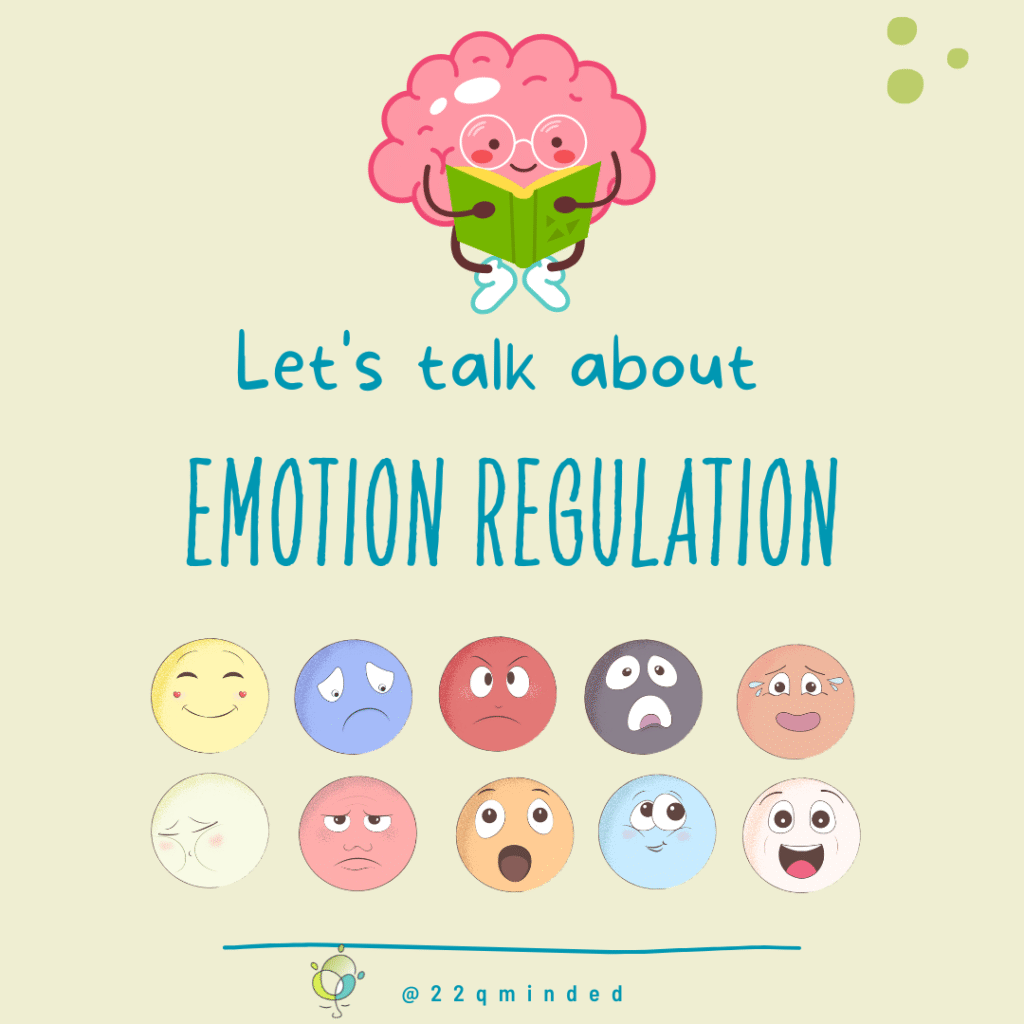Every child is unique. But when you learn your child has a genetic condition like 22q11.2 duplication syndrome, you may experience a complex mix of emotions — relief at having an explanation, uncertainty about the diagnosis, and concern about what the future may hold.
What makes this condition particularly important to know about is that it is more common than many people realise, possibly affecting as many as 1 in 1,600 individuals, yet it remains under-recognised. Many families (and even some professionals) may never have heard of it before diagnosis, and because symptoms can be mild, it often goes undetected.
In this blog, we unpack what 22q11.2 duplication syndrome is, how it may affect children and families, and why understanding it can help guide the right care, support, and connection.
What Is 22q11.2 Duplication Syndrome?
22q11.2 duplication syndrome (also written as dup22q11.2) occurs when a small segment of extra genetic material is present on chromosome 22, specifically on the long arm (“q arm”) at position 11.2. Most people have exactly two copies of chromosome 22, one from each parent. In dup22q11.2, there are about 30–40 additional genes on one copy.
The typical duplicated region is about three megabases in size, although smaller or larger variants occur. These extra genes play important roles in development, particularly for the heart, palate, gastrointestinal tract, immune system, and brain. The presence of an extra copy can influence how these systems develop and function.
How Common Is It?
While 22q11.2 deletion syndrome is often cited as affecting 1 in 2,000–6,000 live births, duplication syndrome may actually be more common, with research suggesting a prevalence of about 1 in 1,600 people, and possibly even higher. However, many cases are never diagnosed because symptoms can be subtle or absent.
How Does It Happen?
In most cases (about 70%), the duplication is inherited from a parent who also carries it, sometimes without knowing. In other cases, it arises as a de novo (new) genetic change during early development. If a parent has the duplication, there is a 50% chance it will be passed to each child.
It’s important to note that nothing a parent did or didn’t do causes this duplication. It is a naturally occurring genetic event.
Common Features and Challenges
The effects of dup22q11.2 vary widely. Even within the same family, one person may have few or no noticeable issues, while another may face significant health, developmental, or learning challenges.
Some features reported in the research literature and clinical practice include:
- Heart differences (e.g., congenital heart defects)
- Endocrine and immune system issues
- Gastrointestinal problems
- Velopharyngeal insufficiency (sometimes with cleft palate) affecting speech
- Slow growth
- Genitourinary differences
- Vision and hearing issues
- Low muscle tone
- Feeding difficulties in infancy
- Speech and language delays
From a developmental perspective, some people present with:
- Global developmental delay
- Motor coordination difficulties (sometimes diagnosed as developmental coordination disorder)
- Learning differences, especially with reading, writing, and mathematics
- Intellectual disability in some individuals
- Speech and language impairments
- Behavioural and Mental Health Considerations
Research and clinical experience suggest higher rates of:
- Attention-deficit/hyperactivity disorder (ADHD)
- Autistic traits or autism diagnosis
- Anxiety disorders, often linked to repeated medical experiences, learning challenges, and social difficulties
- Impulsivity or emotional regulation challenges
Not every person will experience these differences, but early identification and support can make a significant difference.
Why a Diagnosis Matters
Receiving a diagnosis can be life-changing for families. It provides:
- Clarity about the reasons behind a child’s differences
- Opportunities for targeted support from health, education, and therapy services
- Genetic counselling for family planning
- Connection with support networks and community groups
- Proactive health monitoring to identify and manage known risks early
Even for individuals with mild or no obvious symptoms, knowing about the duplication can help anticipate and address potential challenges.
Looking to the Future
With the right support, children and adults with dup22q11.2 can thrive. Early intervention in speech, motor skills, and learning can improve developmental outcomes. Social and emotional support helps children build resilience and self-confidence. Ongoing medical monitoring ensures that emerging health issues are addressed promptly.
Most importantly, every person with dup22q11.2 is more than their diagnosis. While the duplication is part of their story, it does not define their abilities, personality, or potential.
In Summary
22q11.2 duplication syndrome is common but under-recognised. It can present with a wide range of health, developmental, and behavioural differences — or, in some individuals, very few symptoms at all.
Understanding this condition is the first step in ensuring children and families receive the right care, tailored education support, and community connection they deserve.
If your child has recently been diagnosed, know that you are not alone. Support, knowledge, and connection are available, and your child remains the same wonderful, capable, and loveable person they have always been.
Further Reading and Resources:
To learn more, register for our on-demand webinar “Talking about 22q with my child“. You might also be interested in the book Chromosome Magic: The Science of 22q and You by Dr Linda Campbell (published by 22qMinded). A recent scientific paper by Bartik, L. E., Hughes, S. S., Tracy, M., Feldt, M. M., Zhang, L., Arganbright, J., & Kaye, A. (2022). 22q11. 2 duplications: Expanding the clinical presentation. American Journal of Medical Genetics Part A, 188(3), 779-787 may come in handy for you to learn a bit more. We also recommend that you reach out to international and national support groups, as they can provide guidance and support.




